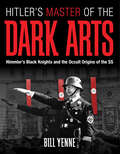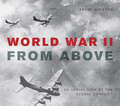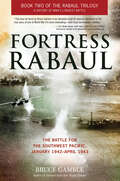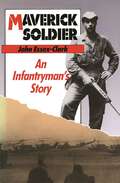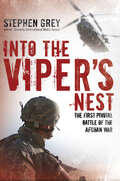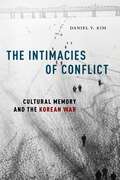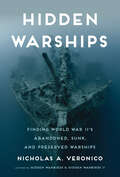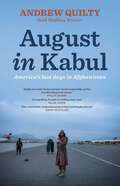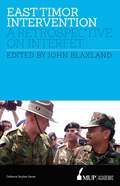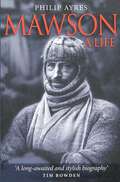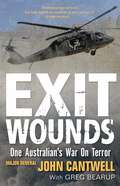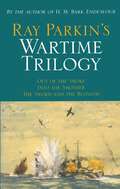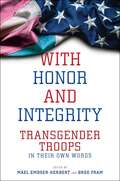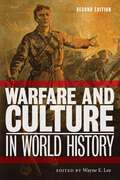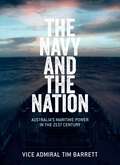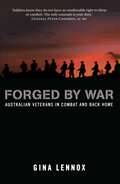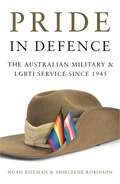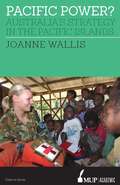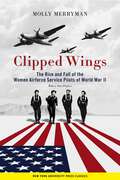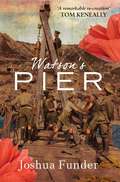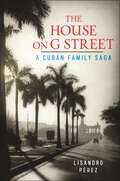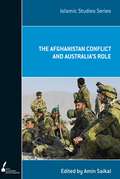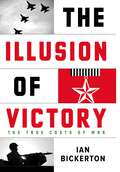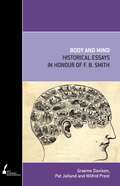- Table View
- List View
Hitler's Master of the Dark Arts: Himmler's Black Knights and the Occult Origins of the SS
by Bill YenneA history of Nazi Germany’s SS and its leader examining the groups mystical cult aspects and Himmler’s rise through the ranks of power.Hitler’s Nazi Party, at its evil roots, embraced a bizarre interpretation of ancient European paganism, blending it with fragments of other traditions from sources as diverse as tenth-century Saxon warlords, nineteenth-century spiritualism, and early-twentieth-century fringe archeology. Even the swastika, the hated symbol of Nazism, had its roots in ancient symbolism, its first recorded appearance carved into a mammoth tusk twelve thousand years before Hitler came to power.At the heart of the evil was Hitler’s “witch doctor,” Heinrich Himmler, and his stranger-than-fiction cult, the deadly SS. The mundanely named Schutzstaffel, literally “protective squadron,” was the very essence of Nazism, and their threatening double lightning bolt was one of the most dreaded symbols of the Third Reich. With good reason: what the SS was truly protecting was the ideology of Aryan superiority.Hitler’s Master of the Dark Arts is the first history of the SS and its leader to focus on the mystical cult aspects of the organization. It follows Himmler’s transformation of the SS from a few hundred members in 1929 to over fifty thousand black-uniformed Aryans by the mid-1930s. Concurrent with its expansion and its eventual independence from the brown shirts of the SA, Himmler infused the Black Knights with a mishmash of occult beliefs and lunatic-fringe theories that would have been completely laughable—except that they were also used to justify the Final Solution.
World War II From Above: An Aerial View of the Global Conflict
by Jeremy HarwoodThis pictorial military history examines the use of spy planes by both sides of WWII as they battled to gain advantage through aerial intelligence.In World War II From Above, Jeremy Harwood examines a little-known aspect of intelligence gathering operations as they evolved throughout the conflict. The volume features dozens of eye-catching aerial reconnaissance photographs drawn from the archives compiled by all the major fighting powers. His accompanying text profiles the daring pilots who took these photographs and the photographic interpreters who pioneered a new science to reveal the secrets they contained.This inspiring and informative history focuses on crucial operations from both the Allied and Axis perspectives—from the American Doolittle Raid against Japan to the numerous Allied battles against Germany’s cutting-edge U-boats to the Battle of Monte Cassino and a score of other epic campaigns.Told through photographs that have largely never before appeared in print outside of their reconnaissance origins, World War II From Above combines history with photography, placing the reader in the midst of the action.
Fortress Rabaul: The Battle for the Southwest Pacific, January 1942–April 1943 (The Rabaul Trilogy)
by Bruce Gamble“This tour de force . . . is an absolute must for anyone interested in the true story of one of World War II’s most interesting—and most overlooked—battles.” —Col. Walter Boyne, USAF (Ret.), author of Clash of WingsFor most of World War II, the mention of Japan’s island stronghold sent shudders through thousands of Allied airmen. Some called it “Fortress Rabaul,” an apt name for the headquarters of the Imperial Japanese forces in the Southwest Pacific. Author Bruce Gamble chronicles Rabaul’s crucial role in Japanese operations in the Southwest Pacific. Millions of square feet of housing and storage facilities supported a hundred thousand soldiers and naval personnel. Simpson Harbor and the airfields were the focus of hundreds of missions by American air forces.Winner of the “Gold Medal” (Military Writers Society of America) and “Editor’s Choice Award” (Stone and Stone Second World War Books), Fortress Rabaul details a critical and, until now, little understood chapter in the history of World War II.“Not for the first time, Bruce Gamble has done amazing work gathering a dazzling array of tiny, little facts, then arranging them in a big, dazzling story that amazes one’s inner historian even as it breaks one’s heart on its way to a triumphal conclusion.” —Eric Hammel, author of Two Flags over Iwo Jima“Drawing on a variety of sources from both sides, the author has written a detailed reference book that reads like a novel.” —Air Classics“Fortress Rabaul opens a broader vista on this under-studied campaign with its wide research, thoughtful analysis, and gifted story-teller’s panache.” —WWII History Magazine
Maverick Soldier: An Infantryman's Story
by John Essex-ClarkMaverick Soldier is the forthright, nuts-and-bolts account of John Essex-Clark's unmatched experience as a warrior, leader and teacher. Its telling is all of a piece with the man himself—bluff, astute, no-nonsense. In the course of stumbling, as he puts it, from the rank of private to brigadier, Essex-Clark has fought in wars with the Australian, British, United States and Rhodesian armies, and has led in battle Malay, South African, Rhodesian, Vietnamese, British, New Zealand, United States and Australian soldiers. In peacetime came tours of duty in North America and Western Europe. Nicknamed 'Digger' by the Rhodesian Army and 'The Big E' in the Australian, he led by force of personality, drive, common sense and self-confidence. Military readers and armchair witnesses to war will be challenged by his trenchant and timely views on army obsession with technology and the paucity of subtle tactical thinking. Various controversies are aired: whether we were 'pussyfooters' in Vietnam; bastardization at Duntroon; how best to conduct counter-terrorism. He is angered by what he sees as a 'surfeit of military dilettantes and budding bureaucrats and a dearth of warrior-chiefs'. Always one to lead from the front and to trust the courage and good sense of the ordinary infantryman, his interests have been strategy and battle tactics, leadership and training. He writes particularly for today's young soldier whom he loves with an old fashioned generosity, and to whom he can declare with conviction, 'I have no angst about being a soldier'.
Into the Viper's Nest: The First Pivotal Battle of the Afghan War
by Stephen GreyThis gripping account of the Afghan War details the dramatic three-day battle for the Taliban stronghold of Musa Qala in 2007.With a pre-battle population of fifteen to twenty thousand, Musa Qala was the only significant town held by the Taliban at that time. Attacking against two thousand Taliban fighters, who had been occupying the town for more than nine months, the International Security Assistance Force (ISAF) was spearheaded by Task Force 1 Fury: 1st Battalion, 508th Parachute Infantry Regiment, of the 82nd Airborne Division.For the ISAF, Musa Qala was a target of immense importance. The Taliban had to be driven out and the town secured. But the Taliban were well prepared to stand and fight. What resulted was one of the biggest and most terrible battles of the war.
The Intimacies of Conflict: Cultural Memory and the Korean War
by Daniel Y. KimWinner, 2020 Peter C Rollins Prize, given by the Northeast Popular & American Culture AssociationEnables a reckoning with the legacy of the Forgotten War through literary and cinematic works of cultural memoryThough often considered “the forgotten war,” lost between the end of World War II and the start of the Cold War, the Korean War was, as Daniel Y. Kim argues, a watershed event that fundamentally reshaped both domestic conceptions of race and the interracial dimensions of the global empire that the United States would go on to establish. He uncovers a trail of cultural artefacts that speaks to the trauma experienced by civilians during the conflict but also evokes an expansive web of complicity in the suffering that they endured.Taking up a range of American popular media from the 1950s, Kim offers a portrait of the Korean War as it looked to Americans while they were experiencing it in real time. Kim expands this archive to read a robust host of fiction from US writers like Susan Choi, Rolando Hinojosa, Toni Morrison, and Chang-rae Lee, and the Korean author Hwang Sok-yong. The multiple and ongoing historical trajectories presented in these works testify to the resurgent afterlife of this event in US cultural memory, and of its lasting impact on multiple racialized populations, both within the US and in Korea. The Intimacies of Conflict offers a robust, multifaceted, and multidisciplinary analysis of the pivotal—but often unacknowledged—consequences of the Korean War in both domestic and transnational histories of race.
Hidden Warships: Find World War II's Abandoned, Sunk, and Preserved Warships
by Nicholas A. VeronicoA photo-filled tour of wrecked warships around the world, with their stories recounted in “a wonderfully clear [and] lively style” (Seattle Post Intelligencer).Sunk by enemy fire, scuttled, or run aground, the number of World War II-era battleships, cruisers, submarines, and other warships that ended their service on the bottom of the world’s oceans and seas is enormous. In the decades since the conflict, wreck hunters have pored over historical records and combed the world’s oceans to find their remains. Now you too can see them up close—without getting your feet wet.In Hidden Warships, naval historian Nicholas A. Veronico details the history, recovery, and preservation of these sunken combat ships—including accounts from the divers and restorers who have worked with them. Beginning with the Japanese midget submarines that attacked Pearl Harbor and continuing into the modern era, including the 2006 sinking of the postwar aircraft carrier USS Oriskany, Veronico provides rich detail on each noteworthy vessel, including over 150 photographs, ship specifications, geographic coordinates, and more. For the enthusiast who wants an even more complete experience, the book concludes with a list of preserved ships, an Internet resource guide, and a suggested reading list to continue the exploration.Whether you plan on visiting these historic sites yourself or simply enjoy their compelling stories, Hidden Warships will guide you, above the surface and underwater, through some of the most famous relics of World War II naval warfare.“A tantalizing selection of sunken vessels, including many recent discoveries.” —Naval History Magazine
August in Kabul: America's last days in Afghanistan
by Andrew QuiltyAs night fell on 15 August 2021, the Taliban entered Kabul, capital of Afghanistan. After a 20-year conflict with the United States, its Western allies and a proxy Afghan government, the Islamic militant group once aligned with al Qaeda was about to bury yet another foreign foe in the graveyard of empires. And for America, the superpower, this was yet another foreign disaster. As cities and towns fell to the Taliban in rapid succession, Western troops and embassy staff scrambled to flee a country of which they had lost control. To the world, Kabul in August looked like Saigon in 1975. August in Kabul is the story of how America's longest mission came to an abrupt and humiliating end, told through the eyes of Afghans whose lives have been turned upside down: a young woman who harbours dreams of a university education; a presidential staffer who works desperately to hold things together as the government collapses around him; a prisoner in the notorious Bagram Prison who suddenly finds himself free when prison guards abandon their post. Andrew Quilty was one of a handful of Western journalists who stayed in Kabul as the city fell. This is his first-hand account of those dramatic final days.
East Timor Intervention: A retrospective on INTERFET
by John BlaxlandAustralia's involvement in the liberation of East Timor in 1999 was the most decisive demonstration of Australian influence in the region since World War II and the largest military contribution since the Vietnam War. Australian diplomacy and leadership shaped the events that led to the birth of Asia's newest nation.East Timor Intervention looks at the crisis through the prism of key participants and observers on the ground and abroad, including Indonesia's martial law commander Kiki Syahnakri defending his record, the country's first president Xanana Gusm�o on the resolution and poise of Timor's resistance fighters, Australia's Chief of Defence Force Chris Barrie on cobbling the force together, commander of the International Force Peter Cosgrove on the operation, and key policy adviser Hugh White on Canberra's policy contortions in the lead-up to the intervention.This impressive collection includes significant new perspectives on Southeast Asian security affairs and the role Australia can play in regional security and stability.
Mawson: A Life
by Philip AyresSir Douglas Mawson was Australia's pre-eminent Antarctic explorer, a tall, quiet scientist who survived several gruelling polar expeditions, and went on to play a notable role in the academic and research establishment.He is most famed for an ill-fated expedition in 1913, in which he trekked hundreds of kilometres alone, without supplies, after his two companions perished. But he was also the main architect of Australia's official Antarctic presence in the first half of the twentieth century, instrumental in the Australian Government's decision to claim part of Antarctica, and in the founding of Australia's major organization for Antarctic exploration and research.Philip Ayres' life of Mawson is the definitive biography of the polar explorer, who died in 1958. In this richly researched and well-illustrated work, he paints a picture of a man who was a brave and resourceful hero, but also a deeply flawed personality.
Exit Wounds: One Australian's War On Terror: Updated Edition
by Greg Bearup Major General John CantwellJohn Cantwell, Queensland country boy, enlisted in the army as a private and rose to the rank of major general. He was on the front line in 1991 as Coalition forces fitted bulldozer blades to tanks and buried Iraqi troops alive. He served in Baghdad in 2006 and saw what a car bomb does to a crowded marketplace. He was commander of Australian forces in Afghanistan in 2010 when ten of his soldiers were killed. He came home in 2011 to be considered for the job of chief of the Australian Army. Instead, he ended up in a psychiatric hospital. Exit Wounds is the deeply human account of one man's tour of the War on Terror, the moving story of life on a modern battlefield: from the nightmare of cheating death in a field strewn with mines, to the utter despair of looking into the face of a dead soldier before sending his body home to his mother. Cantwell hid his post-traumatic stress disorder for decades, fearing it would affect his career. Australia has been at war for the past twenty years and yet there has been no stand-out account from these conflicts - Exit Wounds is it. Raw, candid and eye-opening, no one who reads this book will be unmoved.
Ray Parkin's Wartime Trilogy
by Ray ParkinThese brilliant books hum with action, adventure and courage. Honestly and plainly written, they are full of humanity and great wisdom. Out of the Smoke tells of Ray's experiences as Action Chief Quartermaster in HMAS Perth, which was sunk while engaging an overwhelming Japanese naval force in the Sunda Strait. Two cruisers, HMAS Perth and USS Houston, fought until their ammunition was exhausted. Thus defenceless and surrounded, sunk by four torpedoes and gunfire. It had been a night action, desperate and determined until the inevitable end. A small party of the survivors tried to sail a derelict lifeboat to safety, only to land at a port in enemy hands. In his Introduction to the book, Sir Laurens van der Post describes Out of the Smoke as 'one of the great stories of war at sea'. Into the Smother tells, direct from the author's diary, of his fifteen months as a POW on the Burma-Siam {Thailand} railway. The construction of this railway remains one of history's most awful instances of man's inhumanity to man. Ray documents with remarkable restraint the horrors and sufferings he and his comrades endured at the mercy of the cruel jungle and the Imperial Japanese Army. The book has an appendix by Sir Edward 'Weary' Dunlop, to whose care Ray had entrusted his secret writings, drawings and paintings when taken to Japan. Into the Smother is impressive in its honesty and inspiring in its evocation of courage and endurance. The Sword and the Blossom tells of Ray's last twelve months of captivity. Shipped to Japan in an incredibly crowded, derelict tramp steamer, he and his comrades endured submarine attacks and weathered a typhoon with open hatches. They were then taken to a POW camp at Ohama, on the shores of Honshu, where they worked in a coal mine under the Inland Sea. With the dropping of the atomic bombs on Hiroshima and Nagasaki—one just to the north of them, the other just to the south-the POWs found themselves free among a people who had held over them the power of life and death. The Sword and the Blossom gives the reader a remarkable insight into the Japanese way of thinking, and lights the ghastly experience with magnificent prose. These classic books are illustrated with Ray Parkin's evocative and detailed drawings and sketches, made secretly at the time.
With Honor and Integrity: Transgender Troops in Their Own Words (LGBTQ Politics)
by Máel Embser-Herbert Bree FramHeartfelt personal accounts from transgender people fighting for the right to serve in the military “Prior to coming out as transgender I served the first several years of my career under “Don’t Ask, Don’t Tell,” hiding my sexual orientation out of the constant fear of expulsion. I then found myself in the same predicament as when I first joined, wanting nothing more than to serve my country and do my job, but at the cost of sacrificing a major part of who I am. . . . This time, however, I decided that I could no longer sacrifice my own well-being, my own authentic self.”—Mak Vaden, Warrant Officer 1, U.S. Army National Guard, 2006-present“I have traveled around the world. . . . I have been on five cutters with eleven years of sea time and commanded the Coast Guard cutter Campbell. I have negotiated treaties and fostered international law enforcement cooperation. I have stopped drug smugglers and seized illegal fishing vessels on the high seas. And, I also have gender dysphoria and identify as a trans woman.”—Allison Caputo, Captain, US Coast Guard, 1995–presentOn January 25, 2021, in one of his first acts as President, Joe Biden reversed the Trump Administration’s widely condemned ban on transgender people in the military. In With Honor and Integrity, Máel Embser-Herbert and Bree Fram introduce us to the brave individuals who are on the front lines of this issue, assembling a powerful, accessible, and heartfelt collection of first-hand accounts from transgender military personnel in the United States. Featuring twenty-six essays from current service members or veterans, these eye-opening accounts show us what it is like to serve in the military as a transgender person. From a religious affairs specialist in the Army National Guard, to a petty officer first class in the Navy, to a veteran of the Marine Corps who became “the real me” at age forty-nine, these accounts are personal, engaging, and refreshingly honest. Contributors share their experiences from before and during President Trump’s ban—what barriers they face at work, why they do or don’t choose to serve openly, and how their colleagues have treated them. Fram, a lieutenant colonel who is serving openly as a transgender woman in the US Space Force, and has advocated for open service policies, shares her experience in the aftermath of Trump’s announcement of the ban on Twitter. Ultimately, Embser-Herbert and Fram provide an inspiring look at the past, present, and future of transgender military service. At a time when LGBTQ rights are under siege, and the opportunity to serve continues to be challenged, With Honor and Integrity is a timely and necessary read.
Warfare and Culture in World History, Second Edition (Warfare And Culture Ser. #9)
by Wayne E. LeeAn expanded edition of the leading text on military history and the role of culture on the battlefieldIdeas matter in warfare. Guns may kill, but ideas determine when, where, and how they are used. Traditionally, military historians attempted to explain the ideas behind warfare in strictly rational terms, but over the past few decades, a stronger focus has been placed on how societies conceptualize war, weapons, violence, and military service, to determine how culture informs the battlefield. Warfare and Culture in World History, Second Edition, is a collection of some of the most compelling recent efforts to analyze warfare through a cultural lens. These curated essays draw on, and aggressively expand, traditional scholarship on war and society through sophisticated cultural analysis. Chapters range from an organizational analysis of American Civil War field armies, to an exploration of military culture in late Republican Rome, to debates within Ming Chinese officialdom over extermination versus pacification.In addition to a revised and expanded introduction, the second edition of Warfare and Culture in World History now adds new chapters on the role of herding in shaping Mongol strategies, Spanish military culture and its effects on the conquest of the New World, and the blending of German and East African military cultures among the Africans who served in the German colonial army. This volume provides a full range of case studies of how culture, whether societal, strategic, organizational, or military, could shape not only military institutions but also actual battlefield choices.
Navy and the Nation: Australia's Maritime Power in the 21st Century
by Tim BarrettThe Royal Australian Navy is at a watershed moment in its history. Major reinvestment following the 2016 Defence White Paper will see it re-equipped with offshore patrol boats, a new class of frigate, a modern and expanded submarine force and an air warfare destroyer.How does the Navy best prepare for the future? Vice Admiral Tim Barrett forcefully argues the answer is by reimagining the way the Navy views itself, especially its domestic and international relationships.In The Navy and the Nation Vice Admiral Barrett outlines the extensive opportunities for the service and Australia if the Navy is embraced as a national enterprise.
Forged By War: Australian Veterans in Combat and Back Home
by Gina LennoxIn Forged By War, Australian veterans and their families reveal the experience of combat and how it has changed their lives. These stark first-hand accounts describe the reality of military action and its personal consequences in every major conflict and peacemaking mission since World War II, including the invasion of Iraq. Sometimes the reader is in lockstep with a soldier on patrol, watching as a land mine explodes, or a local militiaman points an AK–47 at Australian peacemakers. Other times, the reader is inside a returned veteran's head, feeling their superfluous adrenalin, their need to control their environment, even at home. With accounts from Peter and Lynne Cosgrove, Graham Edwards, Frank Hunt (I Was Only Nineteen), other veterans of Vietnam, Glenda Humes (daughter of Capt Reginald Saunders), peacemakers and an SAS trooper, this compelling investigation by Gina Lennox in underpinned by the question: where does family fit in a soldier's life?
Pride in Defence: The Australian Military and LGBTI Service since 1945
by Noah Riseman Shirleene RobinsonSince the Second World War the Australian military has undergone remarkable transformations in the way it has treated lesbian, gay, bisexual, transgender and intersex service members: it has shifted from persecuting, hunting and discharging LGBTI members to embracing them as valued members who enhance the Force's capabilities. LGBTI people have served in the Australian military since its very beginnings, yet Australian Defence Force histories have been very slow to recognise this. Pride in Defence confronts that silence. It charts the changing policies and practices of the ADF, illuminating the experiences of LGBTI members in what was often a hostile institution. Drawing on over 140 interviews and previously unexamined documents, Pride in Defence features accounts of secret romances, police surveillance and traumatic discharges. At its centre are the courageous LGBTI members who served their country in the face of systemic prejudice. In doing so, they showed the power of diversity and challenged the ADF to make it a far stronger institution.
Pacific Power?: Australia's strategy in the Pacific Islands
by Joanne WallisAustralia is much larger and has significantly more military and economic power than its Pacific Island neighbours. As a result, it is frequently described as having a natural right to lead in the region. Yet, Australia has found it difficult to effectively influence Pacific Island states in pursuit of its strategic interests. It provides the definitive account of how, and how effectively, Australia has sought to influence Pacific Island states in pursuit of its strategic interests since 1975, the year that Papua New Guinea, Australia's former colonial territory, gained independence. Informed by interviews with key decision makers, Pacific Power? analyses why Australia has had difficulty exercising influence in the Pacific Islands and identifies how Australia can more effectively influence Pacific Island states in pursuit of its strategic interests, and how Australia can present itself more as a Pacific partner than power.
Clipped Wings: The Rise and Fall of the Women Airforce Service Pilots (WASPs) of World War II (WASPs)
by Molly MerrymanRevives the overlooked stories of pioneering women aviators, who are also featured in the forthcoming documentary film Coming Home: Fight for a LegacyDuring World War II, all branches of the military had women's auxiliaries. Only the Women Airforce Service Pilots (WASP) program, however, was made up entirely of women who undertook dangerous missions more commonly associated with and desired by men. Within military hierarchies, the World War II pilot was perceived as the most dashing and desirable of servicemen. "Flyboys" were the daring elite of the United States military. More than the WACs (Army), WAVES (Navy), SPARS (Coast Guard), or Women Marines, the WASPs directly challenged these assumptions of male supremacy in wartime culture. WASPs flew the fastest fighter planes and heaviest bombers; they test-piloted experimental models and worked in the development of weapons systems. Yet the WASPs were the only women's auxiliary within the armed services of World War II that was not militarized. In Clipped Wings, Molly Merryman draws upon military documents—many of which weren’t declassified until the 1990s—congressional records, and interviews with the women who served as WASPs during World War II to trace the history of the over one thousand pilots who served their country as the first women to fly military planes. She examines the social pressures that culminated in their disbandment in 1944—even though a wartime need for their services still existed—and documents their struggles and eventual success, in 1977, to gain military status and receive veterans’ benefits.In the preface to this reissued edition, Merryman reflects on the changes in women’s aviation in the past twenty years, as NASA’s new Artemis program promises to land the first female astronaut on the moon and African American and lesbian women are among the newest pilot recruits. Updating the story of the WASPs, Merryman reveals that even in the past few years there have been more battles for them to fight and more national recognition for them to receive. At its heart, the story of the Women Airforce Service Pilots is not about war or planes; it is a story about persistence and extraordinary achievement. These accomplished women pilots did more than break the barriers of flight; they established a model for equality.
Watson's Pier
by Joshua FunderOn 20 December 1977, as Stanley Watson takes the slow train journey to family Christmas, memories from over 60 years ago play in his mind. He had been and still was a man of his time, as as steady, simple and direct as the railway lines he built. As an engineer in the 28th Signalling Company, recently wed and with a young child, he knew it to be his duty to enlist as soon as war broke out in 1914. He left for Egypt in October and he knows his wife is pregnant as he reaches Gallipoli on 25 April 1915, a participant in that fateful landing that is writ large in Australian history. He survived that landing to construct the first pier at Anzac Cove, from which the Anzacs withdrew on the nights of 18 and 19 December. For a long time, he was known as the last man to leave Gallipoli. Watson's Pier is a beautifully told story as seen through the eyes of Stanley Watson, one of the leaders of the escape from Gallipoli. It draws on Watson's story, his writing, oral history and the official war records. While telling one man's remarkable experience of war for the first time, Watson's Pier challenges history on the final moments at ANZAC Cove and offers a new perspective on the meaning of Gallipoli.
The House on G Street: A Cuban Family Saga
by Lisandro PérezThe unforgettable story of a family swept into history by the Cuban RevolutionIn The House on G Street, award-winning author Lisandro Pérez tells Cuba’s story through the lens of a single family: his own. His book relays the tales of two officers who fought against the Spanish for Cuban independence; a plantation owner who smuggles himself onto a ship; families divided by political loyalties; an orphaned boy from central Cuba who would go on to amass a fortune; a fatal love triangle; violence; and the ever-growing presence of the United States. It all culminates with an unforgettable portrait of a childhood spent in a world that was giving way to another one. The House on G Street is a unique depiction of one of the most consequential events of the twentieth century, told through generations of ancestors whose lives were shaped by dramatic historical forces.Pérez disentangles the complex history by following his family’s thread, imbuing political events with personal meaning. Their story begins with emigration to Cuba and follows the waning years of the colony. The end of Spanish rule gives way to pervasive American influence, and Perez’s family turned to New York as they adapted to the realities of a new republic with compromised sovereignty: privileged educations in boarding schools in Long Island and the Hudson Valley; a family business that took tobacco leaves from the soil of central Cuba to the docks of the East River; and grandparents who met and fell in love one night in the Upper West Side of Manhattan. His family learned to navigate the uneasy relationship between the United States and Cuba, a relationship that was destined to end in dramatic fashion. More than sixty years later, the Cuban Revolution resists receding into the past, sparking continued discussion, debate, and reinterpretation. There is a great deal that is known about the broad historical conditions that inexorably pushed Cuba towards revolution, but much less is known about the people who lived that dramatic history. It is a story that, if not recovered and told, will be lost, for Pérez’s ancestors lived in a world that no longer exists, swept away by a tide of revolutionary change. The House on G Street follows a family whose lives mirror the history of a nation. The result is a compelling blend of memoir and in-depth historical research, a remarkable new view of the path to revolution as seen from the first person.
Afghanistan Conflict and Australia's Role (Islamic Studies Series)
by Amin SaikalA decade after the US-led invasion of Afghanistan in October 2001, the country continues to face a growing insurgency and crises of governance. The Afghanistan Conflict and Australia's Role tackles a number of critical dimensions-politics, society, military, and reconstruction-of this conflict from a range of perspectives.This book unpacks the nature and complexity of the conflict at national and international levels. It makes a critical assessment of the performance of President Hamid Karzai and his government, and the efforts made by the international community, the US and its NATO and non-NATO allies in particular, to stabilise, rebuild and secure Afghanistan as a viable state. In addition, it examines critically the role played by Australia in the conflict.The conclusions are far-reaching, with relevance to anyone interested in the interconnectedness of many contemporary issues-governance, democratisation, development, the role of the media, and counterinsurgency. Islamic Studies Series - Volume 8
Beyond Surrender: Australian prisoners of war in the twentieth century
by Aaron Pegram Joan Beaumont Lachlan GrantOver the twentieth century 35,000 Australians suffered as prisoners of war in conflicts ranging from World War I to Korea. What was the reality of their captivity? Beyond Surrender presents for the first time the diversity of the Australian 'behind-the-wire' experience, dissecting fact from fiction and myth from reality.Beyond Surrender examines the impact that different types of camps, commandants and locations had on surrender, survival, prison life and the prospects of escape. It considers the attitudes of Australian governments to those who had surrendered, the work of relief agencies and the agony of families waiting at home for their husbands, brothers and fathers to be freed.Covering several conflicts and diverse sites of captivity, Beyond Surrender showcases new research from Kate Ariotti, Joan Beaumont, Lachlan Grant, Jeffrey Grey, Karl James, Jennifer Lawless, Peter Monteath, Melanie Oppenheimer, Aaron Pegram, Lucy Robertson, Seumas Spark and Christina Twomey.
Illusion Of Victory: The True Costs of Modern War
by Ian BickertonThe Illusion of Victory demonstrates that most of the rewards of victory in modern warfare are either exaggerated or false. When the ostensible benefits of victory are examined a generation after a war, it becomes inescapably evident that the defeated belligerent rarely conforms to the demands and expectations of the victor. Consequently, long-term political and military stability is denied to both the victorious power and to the defeated one. As a result, neither victory nor defeat deter further outbreaks of war. This sobering reality is increasingly the case in the twentieth and twenty-first centuries. Ian Bickerton persuasively argues that as the rhetoric of victory becomes more hollow all countries must adopt creative new approaches to resolving disputes.
Body and Mind: Historical Essays in Honour of F.B. Smith
by Wilfrid Prest Graeme Davison Pat JallandBody and Mind pays tribute to one of Australia's most outstanding and influential historians, F. B. (Barry) Smith. Barry has made pioneering contributions to the political, social and cultural histories of Britain and Australia, and these essays range across the fields he made his own, especially the interconnected histories of medicine (body) and ideas (mind). The editors bring together several generations of Barry's admirers, colleagues, friends and pupils, including Joanna Bourke writing on war and industrial trauma, Peter Edwards on the Agent Orange controversy, Pat Jalland on death in the London Blitz and Phillipa Mein Smith on the idea of Australasia. Body and Mind is a salute to the inestimable work, and the life and times of F. B. Smith.
